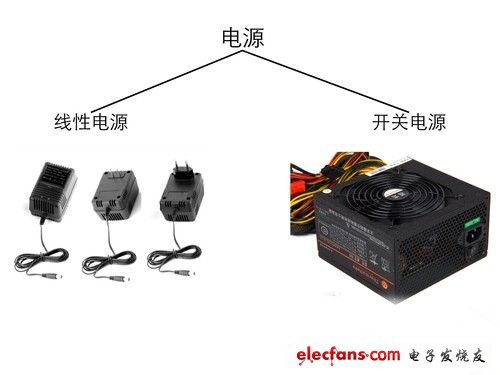Let us first talk about what is the power supply? As the name implies, it is a device that supplies electrical energy. The DC power supply we refer to mainly refers to two types of power supplies: linear power supply and switching power supply.

Power classification
Next, let's compare the differences between the two types of power supplies. As shown below.

From the above table we can conclude that the high frequency switching power supply is more suitable for the power supply of our computer. The most common power supply on our market also uses a closed loop system, which is responsible for controlling the circuit of the switching tube, obtaining a feedback signal from the output of the power supply, and then increasing or decreasing the frequency of the voltage within a certain period according to the power consumption of the PC. A transformer that adapts to the power supply (this method is called PWM, Pulse Width ModulaTIon, pulse width modulation). Thereby, the effective utilization of electric energy is improved, and at the same time, the loss of electrical components is reduced.
In the current market, the high-frequency switching power supply using the closed loop system can be divided into two types according to the structure: the active PFC design power supply and the passive PFC design power supply.

Because the active PFC design power supply is more expensive than the passive PFC design power supply, we can simply think that the active PFC design power supply is a relatively high-end power supply, while the passive PFC design power supply is a relatively low-end power supply. .
Page 2: Mains change computer DC
Let's talk about how this high-frequency switching power supply is applied in our lives. As we all know, the electricity used in our daily life is 220V AC, and our computer needs DC. So, how does this switching power supply achieve such a power transition? Let's explain the transition process through several pictures.





Through the above diagram, we know that the computer's DC power is made four times through the power supply.
The mains electricity passes through the rectifier bridge through EMI → low-voltage AC → pulsating voltage through the capacitor → DC current with ripple through the transformer and the secondary side → get low-voltage DC.
And these four changes are
1. The mains electricity becomes low voltage alternating current through EMI;
2. The low voltage alternating current becomes a ripple voltage through the rectifier bridge;
3. The ripple voltage is changed into a rippled direct current through the capacitor;
4. Ripple DC power becomes pure low voltage DC through the transformer and filter circuit.
So we know a simple process of converting utility power into computer low-voltage DC. Next, let's take a closer look at the process.
Transformer For Renewable Energy
Transformer For Renewable Energy, Solar Transformer,Wind Mill Transformer, Energy Station
Hangzhou Qiantang River Electric Group Co., Ltd.(QRE) , https://www.qretransformer.com